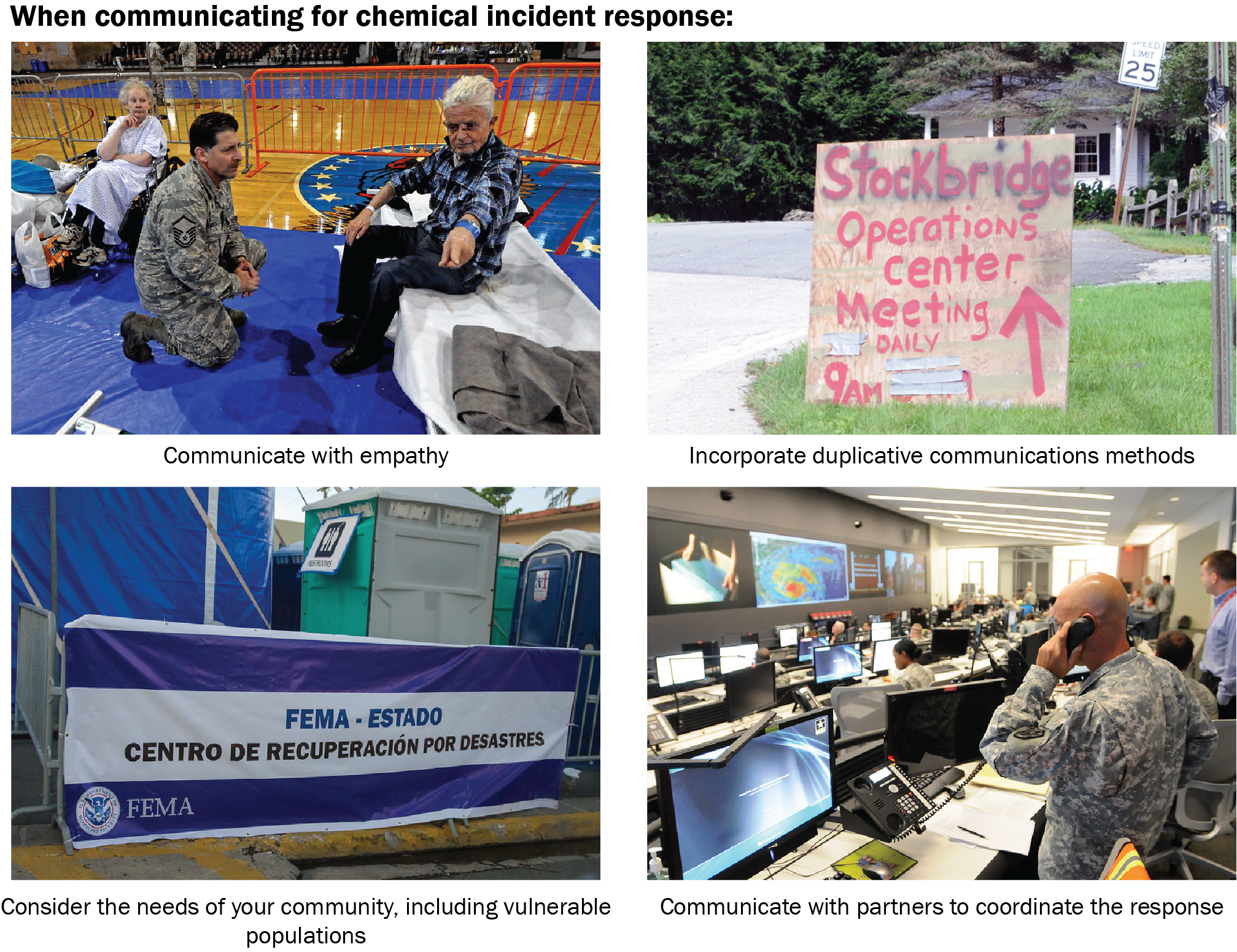(Adapted from the UPMC Center for Health Security’s 2016 “How to Steward Medical Countermeasures and Public Trust in an Emergency”)40

- Embrace communication as an essential part of “front-end” decision-making.
- Incorporate communication experts at the outset when developing emergency management policies.
- Conduct pre-event communication planning that identifies potential threats or hazards, outlines risk reduction approaches, recognizes the resources needed to implement them, and spells out the responsibilities of principal actors.
- Build pre-crisis partnerships and alliances with other stakeholders to coordinate the sharing of communication resources and activities, enlist their help in better understanding and reaching target audiences, and establish trusted links that can be activated during the crisis period.
- Recognize the public’s right to know the risks that it faces as well as protective actions that it can take, and plan for the prompt sharing of this information.
- Accept uncertainty and ambiguity, and acknowledge the potential need to act before all the facts are known. Be prepared to explain the fluidity of conditions and the measures being taken to fill in the knowledge gaps.
- Listen to the public before and during the emergency. Find out what people know, think, or want done about risks, and use this to inform communication and emergency response planning. Acknowledge people’s concerns and adapt messages accordingly.
- Communicate with honesty, candor, and openness. Foster credibility with the public and the media. Be frank about the potential severity of the crisis. Promptly make information available. Convey information uncertainties, strengths, and weaknesses.
- Communicate with compassion, concern, and empathy. Recognize the human dimensions of the emergency and acknowledge people’s distress.
- Respect the unique communication needs of diverse audiences. Be mindful of differences in cultural background, immigrant status, education, technological adeptness, hearing and seeing abilities, and other factors that influence information uptake and processing. Use clear, non-technical, accessible language and graphics to clarify messages; employ multiple language translations where appropriate.
- Meet the needs of the media and remain available. Plan to work diligently with the media before and during an incident knowing that members of the public often rely on news outlets to learn about a crisis or risk.
- Convey messages of self-efficacy. Provide specific information to the public on how to reduce any potential harm and what can be done to help others. Protective messages can reduce material harm as well as enhance morale by restoring a sense of control over uncertain and threatening conditions.
- Monitor public responses and update communication efforts to meet people’s evolving information needs.

Footnotes
40. Sorensen, J.H. (2000). Hazard warning systems: Review of 20 years of progress. Natural Hazards Review 1(2): 119-125.


